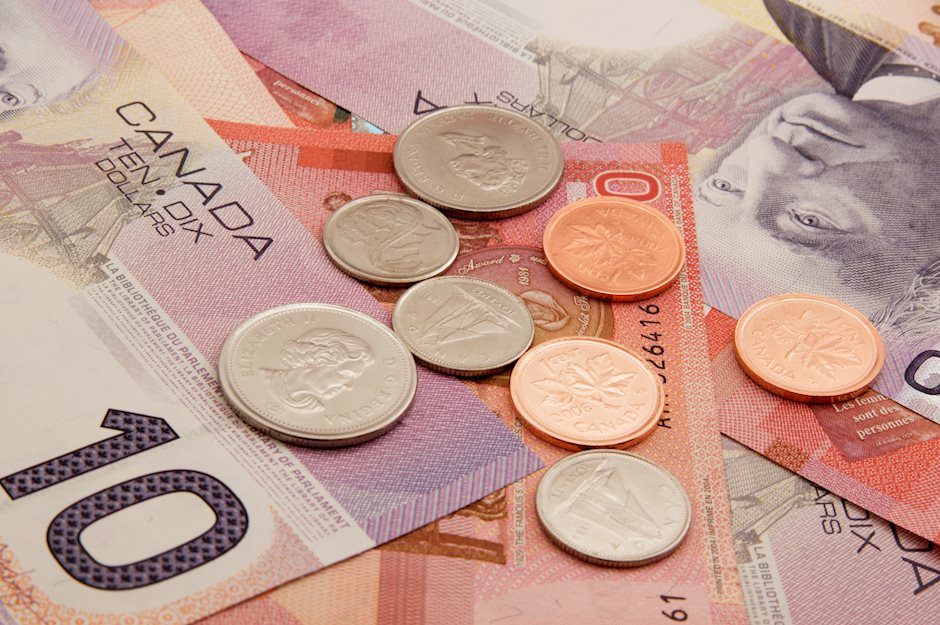USD/CAD recovers intraday losses after upbeat revised US Q2 GDP
- USD/CAD licks its wounds as the US Dollar extends its upside.
- The upbeat second estimate of the US Q2 GDP boosted the US Dollar’s recovery.
- Investors await the US PCE inflation for July and Canada’s Q2 GDP data.

The USD/CAD pair recovers its entire intraday losses and attempts to reclaim the psychological resistance of 1.3500 in Thursday’s North American session. The Loonie asset bounces back strongly as the US Dollar (USD) extends its upside after the United States (US) Bureau of Economic Analysis (BEA) reported that the pace at which the economy grew in the second quarter was higher than it initially appeared.
The agency reported that the economy grew at a robust pace of 3% on an annualized basis against the preliminary estimates of 2.3%. The US Dollar Index (DXY), which tracks the Greenback’s value against six major currencies, climbs to near 101.50.
Meanwhile, major action in the US Dollar will be driven by the US Personal Consumption Expenditure Price Index (PCE) data for July, which will be published on Friday. The PCE report is expected to show that year-on-year core inflation rose at a faster pace of 2.7% from 2.6% in June, with monthly figures growing steadily by 0.2%. The inflation data would significantly influence market speculation for the Federal Reserve’s (Fed) September monetary policy.
Currently, financial markets seem to be confident that the Fed will start reducing interest rates in September. However, traders remain split over the potential size by which the Fed will pivot to policy-normalization.
In the neighboring nation, upbeat Oil prices continue to keep the Canadian Dollar’s (CAD) broader appeal upbeat. The Oil price bounces back strongly amid escalation in Middle East tensions. It is worth noting that Canada is the largest exporter of Oil to the US, and higher oil prices increase Greenback flows into Canada, strengthening the Canadian Dollar.
On the economic front, investors await the monthly and Q2 GDP data, which will be published on Friday. The Canadian economy is estimated to have barely grown in June. Annualized Q2 GDP is projected to have risen at a slower pace of 1.6% from the prior release of 1.7%.
Canadian Dollar FAQs
The key factors driving the Canadian Dollar (CAD) are the level of interest rates set by the Bank of Canada (BoC), the price of Oil, Canada’s largest export, the health of its economy, inflation and the Trade Balance, which is the difference between the value of Canada’s exports versus its imports. Other factors include market sentiment – whether investors are taking on more risky assets (risk-on) or seeking safe-havens (risk-off) – with risk-on being CAD-positive. As its largest trading partner, the health of the US economy is also a key factor influencing the Canadian Dollar.
The Bank of Canada (BoC) has a significant influence on the Canadian Dollar by setting the level of interest rates that banks can lend to one another. This influences the level of interest rates for everyone. The main goal of the BoC is to maintain inflation at 1-3% by adjusting interest rates up or down. Relatively higher interest rates tend to be positive for the CAD. The Bank of Canada can also use quantitative easing and tightening to influence credit conditions, with the former CAD-negative and the latter CAD-positive.
The price of Oil is a key factor impacting the value of the Canadian Dollar. Petroleum is Canada’s biggest export, so Oil price tends to have an immediate impact on the CAD value. Generally, if Oil price rises CAD also goes up, as aggregate demand for the currency increases. The opposite is the case if the price of Oil falls. Higher Oil prices also tend to result in a greater likelihood of a positive Trade Balance, which is also supportive of the CAD.
While inflation had always traditionally been thought of as a negative factor for a currency since it lowers the value of money, the opposite has actually been the case in modern times with the relaxation of cross-border capital controls. Higher inflation tends to lead central banks to put up interest rates which attracts more capital inflows from global investors seeking a lucrative place to keep their money. This increases demand for the local currency, which in Canada’s case is the Canadian Dollar.
Macroeconomic data releases gauge the health of the economy and can have an impact on the Canadian Dollar. Indicators such as GDP, Manufacturing and Services PMIs, employment, and consumer sentiment surveys can all influence the direction of the CAD. A strong economy is good for the Canadian Dollar. Not only does it attract more foreign investment but it may encourage the Bank of Canada to put up interest rates, leading to a stronger currency. If economic data is weak, however, the CAD is likely to fall.
Author

Sagar Dua
FXStreet
Sagar Dua is associated with the financial markets from his college days. Along with pursuing post-graduation in Commerce in 2014, he started his markets training with chart analysis.
















